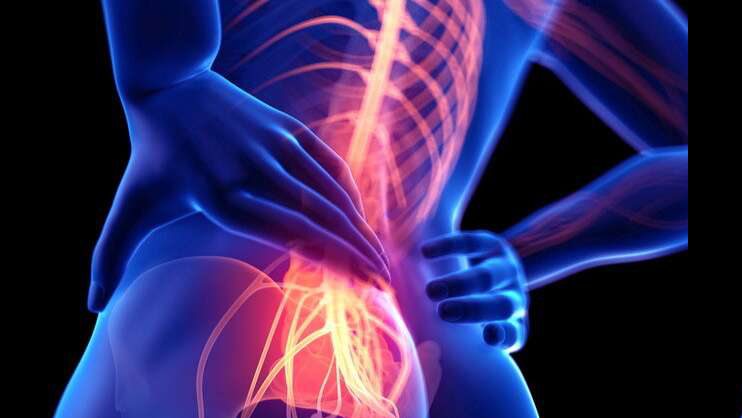People who experience chronic pain symptoms that lasts for a long period of time are more likely to develop depression. And why is that so? The first reason has to do with the negative impacts that pain has on a person’s life, which are referred to as secondary losses, and the second reason has to do with the way the brain receives chronic pain signals.
What does Secondary Losses Mean?
Chronic pain can result in additional losses, which are referred to as “secondary losses” by healthcare experts. Learn more about these secondary losses, such as sadness and even higher pain, that can be caused by primary losses. For instance, persons who live with chronic pain could feel the following:
- Reduced ability to concentrate: The constant distraction caused by chronic pain can make it difficult to concentrate and remember things.
- Uncertainty: It is common to have sentiments of frustration and pessimism when one does not know when the chronic pain will end.
- Adverse reactions to medications: It is possible for chronic pain drugs to create gastrointestinal distress as well as a general sensation of mental sluggishness.
- Isolation: People who live with chronic pain frequently need to walk slowly and cautiously, which may cause them to spend more time at home than is typical for them. People could feel more alone as a result of their lack of participation in social and leisure activities.
- Fatigue: Chronic pain can make it difficult to fall asleep and stay asleep, which can contribute to weariness and irritation during the day. Chronic pain can also make it difficult to get up from sleep.

Related: Specialists Who Treat Chronic Pain
- Stress on the family: It is possible that the individual’s spouse or kid or children may need to take up tasks that were previously handled by the one who is experiencing chronic pain. These shifts can place a strain on family connections and cause the one who is hurting to experience feelings of guilt.
- The strain of work and money issues: If a person is unable to work as a result of chronic pain, they may find themselves in a terrible financial situation.
- Reduced sexual desire or urges: A person’s love relationship may be put under strain if they experience pain during sexual activity or if their sexual drive is lessened.
Furthermore, people who live with chronic pain syndrome may have a sense of perceived injustice, which is the belief that it is unfair that they have to live with the chronic pain symptoms while others do not. It is easy to see how living with chronic pain can lead to feelings of despondency, hopelessness, and other symptoms that are characteristic of major depression or clinical depression.
Impact of Chronic Pain Syndrome on the Brain
Another factor that may contribute to the link between chronic pain and depression is the existence of secondary losses. Once pain signals reach the brain, research has shown that they may be guided through a variety of different routes, depending on the type of pain that is being experienced.
Messages relating to acute pain are sent to the cortex and the thalamus of the brain. Acute pain signals go extremely fast to the cortex, which then prompts the individual to take action to alleviate the pain or to protect themselves from further harm like removing your hand from the hot stove.
When someone has chronic pain, messages are sent to the hypothalamus and the limbic system of the brain. The hypothalamus is the part of the brain that controls the release of various hormones in response to stress. The limbic system is the part of the brain that is responsible for processing feelings and emotions.
In other words, the parts of the brain that are responsible for controlling stress and emotions are traversed by the impulses of chronic pain. This is one of the reasons why stress, despair, and anxiety are typically related with those who have chronic pain.

The underlying biology of Pain
Chronic Pain is defined as an unpleasant sensory and emotional experience linked with existing or potential tissue damage, or explained in terms of such damage by the International Association for the Study of Pain. When pain lasts more than a month after normally healing tissues, or when it has been present for at least three of the preceding six months, we call this chronic pain. There is a distinction between neuropathic pain and nociceptive pain that reflects distinct pathogenic processes, clinical characteristics, and therapeutic approaches. Pain in the nerve system is called neuropathic pain. Symptoms of an aberrant pain response (allodynia, hyperalgesia) are possible, and medications that target the abnormalities in the neurological system are used to treat it. Injury to or the potential for injury to non-neural tissue causes nociceptive discomfort. It reacts to over-the-counter pain relievers and NSAIDs, suggesting a healthy somatosensory nerve system.
Some 18.6% of individuals in Australia have chronic pain. Women, the uneducated, the jobless, the elderly, the crippled, and others who rely on compensation systems are more likely to experience this condition. As arthritis of the joints, degenerative disc disease, severe traumas, and headaches of varying sorts are common triggers. Generalized pain syndromes, such as fibromyalgia, can also cause chronic pain syndrome.
There are many aspects in one’s physical, mental, and social environments that might lead to the development of chronic pain. The biopsychosocial framework is commonly used to describe the intricate interplay between these variables. Nociception, nerve conduction, spinal cord neuron control, neuronal plasticity, and gene expression have all been implicated as possible biological reasons underlying chronic pain. Sensitization, which is described as “increased responsiveness of neurons to their normal input or recruitment of a response to sub-threshold inputs,” is an example of a neuroplastic alteration that can result from poorly managed prolonged pain. The changed pain perception, persistence of pain beyond tissue repair, and resistance to standard analgesics that are characteristic of chronic pain management may be explained by neuroplastic alteration.
For more information on chronic pain symptoms, chronic pain resources or effective chronic pain treatment options, you should book a consultation session with a specialist at Chronic Therapy today, to give you professional advice that will suit your personal experience.

